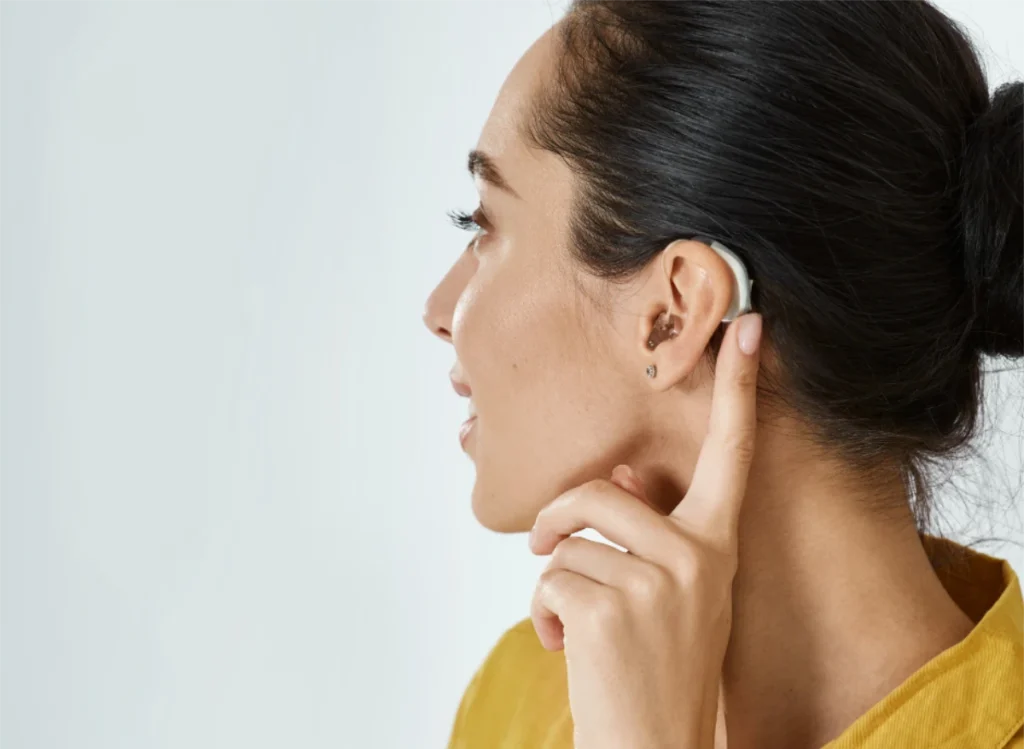Life with Hearing Aids: Strategies for a Smooth Adjustment

Research from Johns Hopkins reveals some eye-opening facts about hearing loss and dementia. Over a 12-year study, they found that even mild, untreated hearing loss can double a person’s risk of developing dementia. Moderate hearing loss triples that risk, and severe hearing loss increases it fivefold. One reason for this is the social and environmental isolation that often comes with hearing loss.
In Australia, about 3.9 million people were living with hearing loss in the 2019-2020 financial year, and this number is expected to double to 7.8 million by 2060. Despite this, only about 20% of those who could benefit from hearing aids actually use them. The main reason? Many people still hold onto outdated stigmas and misconceptions about hearing aids.
A common misconception is that hearing aids are large, bulky, and bothersome. In reality, modern hearing aids are incredibly discreet. They offer rechargeable battery options, perform exceptionally well in challenging listening environments, and can stream phone calls and audio. Plus, they can be controlled and personalised through phone apps. Tailored to each person’s unique needs, these devices help maintain active hearing pathways, keeping people connected to the world around them.
This, in turn, supports their social, psychological, and physical well-being.
Although the journey to using hearing aids can have its challenges, particularly for first-time users or those looking to wear their aids more consistently, there are effective strategies to ensure a smooth transition. This article provides helpful tips for making that adjustment as seamless as possible.
Hearing Aid Acclimatisation
Acclimatisation refers to the process of adjustment and perceptual learning that occurs as a person’s ears and brain adapt to the new auditory information provided by their hearing aid. This period can be challenging, particularly for new users, but it is a normal part of the transition. Long-term users may also experience this phase when their hearing aids are first adjusted.
It’s important to remember that this adjustment phase, while difficult, typically lasts between 4-6 weeks. The duration can vary depending on the degree of hearing loss and the length of time the person has lived with untreated hearing loss. Consistent use of hearing aids is crucial for success during this period.
Initially, users might struggle with focusing on a speaker and filtering out background noise. However, with regular wear and, in some cases, auditory training, the brain can learn to prioritise certain sounds and filter out others. With practice, this process of acclimatisation helps users become more comfortable and proficient with their hearing aids. For more useful tips for first-time hearing aid wearers, please refer to our article 10 Tips For Getting Used To Wearing Hearing Aids.
Understanding the Features of Your Hearing Aids
Modern listening devices boast a range of features which may assist wearers to hear better in different settings. While most hearing aids are primarily focused on promoting speech intelligibility in simple conversational environments with minimal background noise, many offer additional programs that provide further assistance in more challenging situations, such as dining in busy restaurants, listening to music, or talking in the car.
Bluetooth compatibility, a feature of many modern hearing aids, allows users to pair their devices with smartphones and other compatible gadgets. This enables them to stream phone calls, listen to media, adjust the hearing aid volume, and activate different programs. Additionally, some hearing aids include telecoils, which allow users to connect with hearing loops in public settings, such as theaters and churches.
Becoming familiar and comfortable with using these features can significantly ease the adaptation process. Over time, and with experience, most users begin to prefer wearing their hearing aids full-time, appreciating the enhanced ability to be aware of and interact with the sounds around them.
Listening Exercises and Mindfulness Techniques
Reintroducing the brain to sound after long periods of distortion due to hearing loss can be challenging. Initially, all sounds – especially everyday environmental noises and voices – may seem particularly loud and bothersome. However, through cognitive adjustment, these sounds will eventually become part of the subconscious again. Here are some strategies to help with this transition:
Listening exercises can be beneficial in helping the brain receive and translate sound signals that were previously missed. These exercises include:
- Facing your communication partner when speaking.
- Ensuring your face and theirs are visible.
- Avoiding conversations near loud background noise.
- Using closed captions when watching TV to help understand speech amidst other sounds.
Mindfulness techniques can help combat the frustration that may arise from the mental effort required to adjust to wearing hearing aids. The brain works hard to pair visual cues (like lipreading) with louder auditory cues to make sense of conversations. This process can be fatiguing, so it’s important to practice self-compassion and make time to relax and recover each day. Helpful techniques include:
- Meditation
- Journaling
- Listening to music
- Breathwork
- Yoga
Taking time to celebrate new experiences is an important step in this process. Note the small moments when you recall a sound you haven’t heard in a long time or hear something for the first time. Share these experiences with loved ones or keep a journal. This can help others feel more included as they support you on your hearing aid journey.
Hearing Aid Maintenance
Taking good care of the hearing devices is also an important adjustment to life with hearing aids. Proper maintenance of hearing aids and hearing health includes attending regular appointments with your audiologist, cleaning the hearing aids regularly, keeping them dry and sending them for repair as required.
Managing Expectations with Hearing Aids
Understanding what your hearing aids can and cannot accomplish can make the acclimatisation process (and beyond) smoother. Hearing aids are incredible devices that connect people to others and the world around them, but they are not a complete solution. They are designed to treat and assist hearing losses, rather than reversing them.
Hearing aids perform most effectively in quiet environments and over short distances, where they make understanding conversations, listening to music or TV programs, and speaking on the phone easier. However, in louder environments, hearing aids may enhance all sounds, not just the important ones within background noise. Certain hearing aid technologies can assist with this issue more than others, although even premium-level hearing aids cannot eliminate background noise completely.
Hearing Aid Support from Knox Audiology
The process of transitioning to the full-time use of hearing aids is a challenging yet immensely rewarding one. Our team at Knox Audiology are here to assist and support you and answer any questions relating to hearing aids or hearing healthcare along the way. To learn more, don’t hesitate to reach out to us, call 03 9800 5697 or contact us online. We look forward to assisting you on your journey to better hearing.
